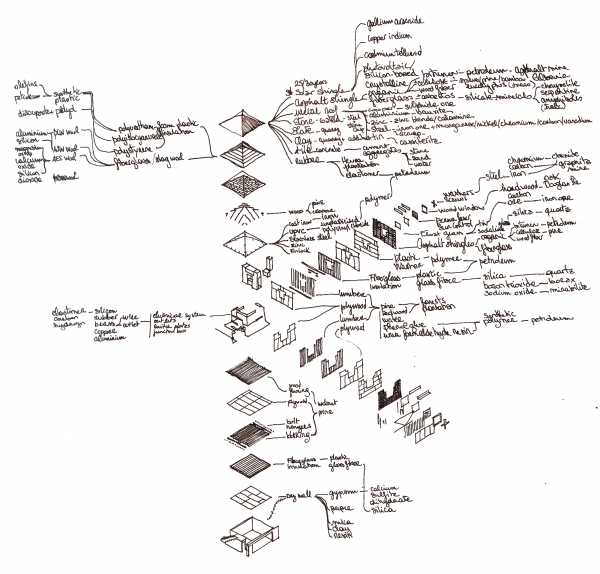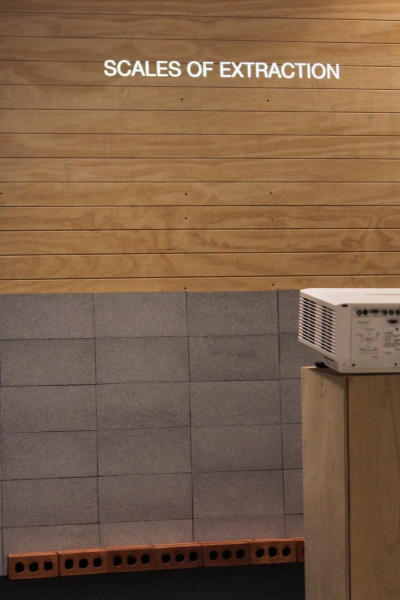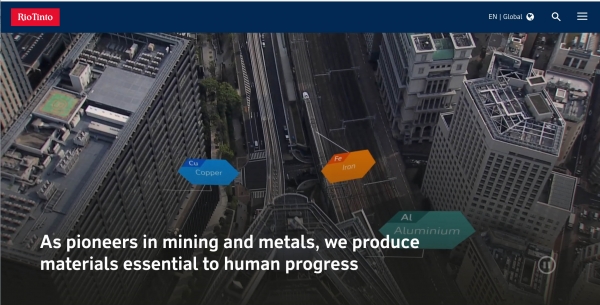Research Practice
Architecture of Extraction: Space and the Political Economy of Construction Materials, Mineral Wealth, and Resource Exhaustion.
“Who is it that the Earth belongs to?”
Bangstad, Sindre, and Nilsen Torbjørn Tumyr. "Thoughts on the Planetary: An Interview with Achille Mbembe." New Frame (2019). https://www.newframe.com/thoughts-on-the-planetary-an-interview-with-achille-mbembe/.
This ongoing research investigates both the global actors engaged in contemporary forms of resource extraction and appropriation—specifically mineral wealth, and their physical effects on territories. The underlying goal is to uncover and explicate the relationship between extraction capitalism, the built environment and knowledge systems via spatial outcomes, from architectural outputs to logistical networks. Moving beyond the obvious observation that some regions are exploited for the benefit of others with tremendous environmental and social consequences, and the physical distances between peripheries and centers, “Architecture of Extraction” discusses current neocolonial expansion in relation to the extraction industry as a planetary project. Architecture provides a salient entry-point, as a space-making process that requires in its materialization numerous mineral resources acquired via extraction and the reallocation/relocation of the Earth’s resources such as limestone, clays, sand, gravel, iron ore, aluminum diatomite, kaolin, bentonite, silica, barite, gypsum, potash, pumice, and talc; as well as processed minerals in the form of aggregates (ie. crushed stone, sand, gravel, cement). It also aims to expose the secondary facilitations technologies allowing for architecture and the building industry to function through connected objects (ie. computers, phones, data centers, information networks) and the common minerals they require for production such as barium, chromite, coltan, copper, dolomite, feldspar, gallium, germanium, gold, halite, indium, lead, lithium, manganese, mercury, mica, nickel, quartz, silicon, silver, sulfite, tantalum, tin, tungsten, uranium, and zinc. In short, this project is constructing a critique of the contemporary forms of resource extraction and of the enabling predatory economics that allow for the production of the built environment, our infrastructure, our cities, our homes, our lives—aiming thus to define a political economy of construction materials.
Outputs:
-Charlotte Malterre-Barthes, "The Devil Is in the Details- Who Is It That the World Belongs To?," in Non-Extractive Architecture- Designing without Depletion, ed. Space Caviar(Berlin: Sternberg Press, 2021).
-Installation 'Scales of Extraction: Politicizing Construction Materials', Seoul Architecture and Urbanism Biennale, Seoul, Sept. 2021. Team: Kathlyn Kao, Severin Bärendbold, with works by Marija Barovic, Chris D'Amico, Elif Erez, Shira Grosman, Elsa Mendoza Andres, Kari Roynesdal; in collaboration with Habitat for Humanity-Korea.
2020, ongoing:
See also Material World



